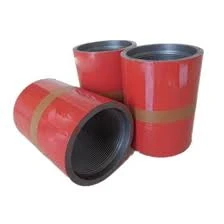- Afrikaans
- Albanian
- Amharic
- Arabic
- Armenian
- Azerbaijani
- Basque
- Belarusian
- Bengali
- Bosnian
- Bulgarian
- Catalan
- Cebuano
- Corsican
- Croatian
- Czech
- Danish
- Dutch
- English
- Esperanto
- Estonian
- Finnish
- French
- Frisian
- Galician
- Georgian
- German
- Greek
- Gujarati
- Haitian Creole
- hausa
- hawaiian
- Hebrew
- Hindi
- Miao
- Hungarian
- Icelandic
- igbo
- Indonesian
- irish
- Italian
- Japanese
- Javanese
- Kannada
- kazakh
- Khmer
- Rwandese
- Korean
- Kurdish
- Kyrgyz
- Lao
- Latin
- Latvian
- Lithuanian
- Luxembourgish
- Macedonian
- Malgashi
- Malay
- Malayalam
- Maltese
- Maori
- Marathi
- Mongolian
- Myanmar
- Nepali
- Norwegian
- Norwegian
- Occitan
- Pashto
- Persian
- Polish
- Portuguese
- Punjabi
- Romanian
- Russian
- Samoan
- Scottish Gaelic
- Serbian
- Sesotho
- Shona
- Sindhi
- Sinhala
- Slovak
- Slovenian
- Somali
- Spanish
- Sundanese
- Swahili
- Swedish
- Tagalog
- Tajik
- Tamil
- Tatar
- Telugu
- Thai
- Turkish
- Turkmen
- Ukrainian
- Urdu
- Uighur
- Uzbek
- Vietnamese
- Welsh
- Bantu
- Yiddish
- Yoruba
- Zulu
Innovative Techniques in Crossover Drilling Tool Development for Enhanced Efficiency and Performance
The Evolution and Importance of Crossover Drilling Tools in Modern Drilling Operations
In the oil and gas industry, drilling operations are the backbone of exploration and production. As resources become increasingly difficult to extract, the tools and technologies used in drilling have evolved significantly. Among these, crossover drilling tools play a crucial role in ensuring the efficiency and effectiveness of drilling operations. This article explores the importance, functionality, and advancements of crossover drilling tools.
What Are Crossover Drilling Tools?
Crossover drilling tools are specialized equipment that facilitate the transition between different types of drilling rigs or systems. They are designed to connect various drilling strings or systems, particularly when there is a need to switch from one drilling method to another, such as from rotary drilling to directional drilling. These tools help in managing the complexities of various drilling operations, ensuring continuity and efficiency.
Importance of Crossover Tools
1. Versatility One of the primary advantages of crossover drilling tools is their versatility. Drilling operators often encounter varying geological formations that require different drilling techniques. Crossover tools allow for quick and efficient adaptations to these changes without the need to dismantle the entire drilling assembly, which can be time-consuming and inefficient.
2. Cost-Effectiveness By enabling a seamless transition between different drilling methods, crossover tools can significantly reduce operational downtime. This translates into cost savings, as prolonged drilling can lead to increased expenses, including labor, equipment wear, and lost production time.
3. Improved Efficiency Using crossover tools allows drilling operators to optimize their drilling strategies. For instance, if a particular formation is better suited for a directional drilling approach, operators can switch rapidly using crossover tools. This flexibility leads to better resource extraction and increases overall productivity.
4. Enhanced Safety Crossover drilling tools are designed with safety as a priority. Transitioning between drilling methods can pose risks; however, these tools incorporate safety features that minimize the potential for accidents or equipment failure during the transition process.
crossover drilling tool

Advancements in Crossover Tool Technology
The development of crossover drilling tools has kept pace with advancements in drilling technology. Traditional crossover tools were often cumbersome and limited in their capabilities, but modern designs have introduced several innovations
1. Smart Technology Many crossover tools are now equipped with advanced sensors and monitoring systems that provide real-time data on drilling parameters. This smart technology allows operators to make informed decisions, adapting their approaches based on live information about the drilling environment.
2. Modular Designs Contemporary crossover tools often feature modular designs, allowing for easy customization based on specific drilling needs. This flexibility means that drilling operations can be tailored to meet the unique challenges posed by each project.
3. Improved Materials The use of advanced materials has enhanced the durability and performance of crossover tools. These materials can withstand extreme temperatures and pressures, making them suitable for use in a wide range of environments, from offshore drilling to deep well applications.
4. Integration with Automation As the industry moves towards greater automation, crossover tools are increasingly being integrated into automated drilling systems. This integration can lead to more precise drilling operations, further enhancing efficiency and reducing the potential for human error.
Conclusion
Crossover drilling tools are indispensable in today’s oil and gas industry, enabling operators to adapt flexibly to the varying demands of drilling projects. Their versatility, cost-effectiveness, and enhanced safety features make them a valuable asset in optimizing drilling operations. As technology continues to evolve, these tools will likely become even more sophisticated, contributing to the overall efficiency and success of resource extraction endeavors.
The future of drilling operations rests on the ability to adapt and innovate, and crossover drilling tools will undoubtedly play a vital role in this ongoing evolution. By leveraging these advanced tools, the oil and gas industry can navigate the complexities of modern drilling challenges, leading to more sustainable and efficient resource production.
-
Tubing Pup Joints: Essential Components for Oil and Gas OperationsNewsJul.10,2025
-
Pup Joints: Essential Components for Reliable Drilling OperationsNewsJul.10,2025
-
Pipe Couplings: Connecting Your World EfficientlyNewsJul.10,2025
-
Mastering Oilfield Operations with Quality Tubing and CasingNewsJul.10,2025
-
High-Quality Casing Couplings for Every NeedNewsJul.10,2025
-
Boost Your Drilling Efficiency with Premium Crossover Tools & Seating NipplesNewsJul.10,2025







